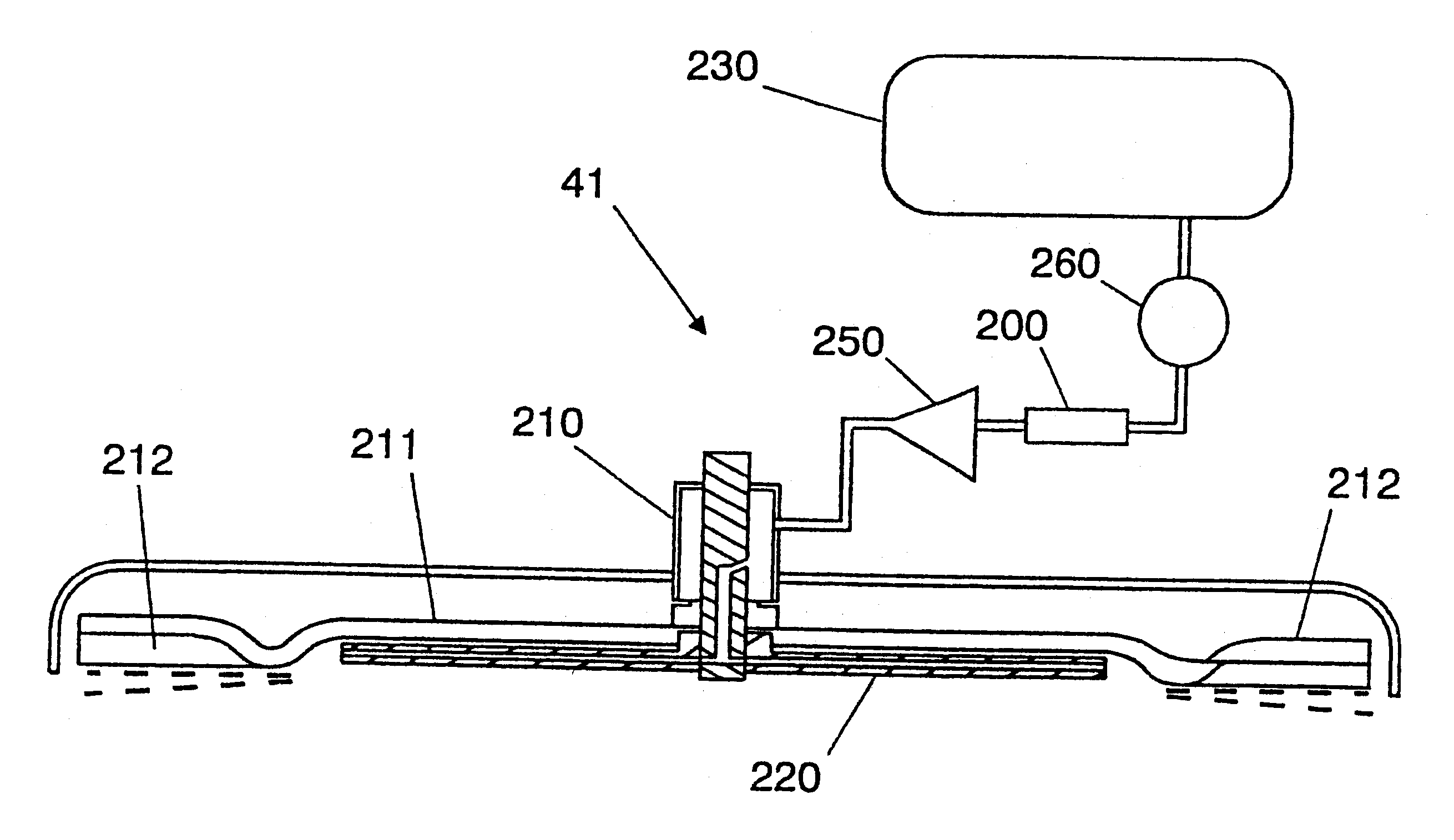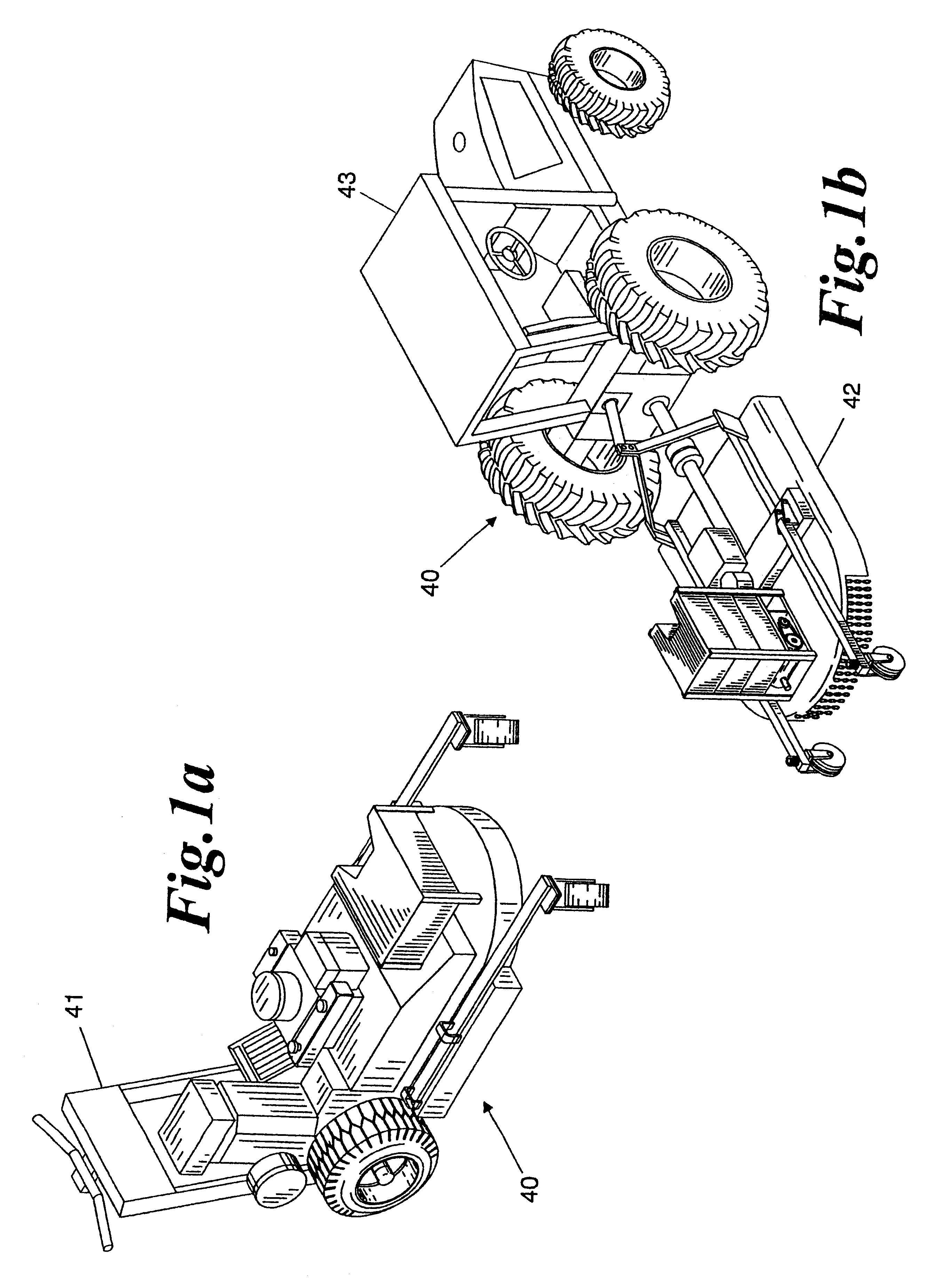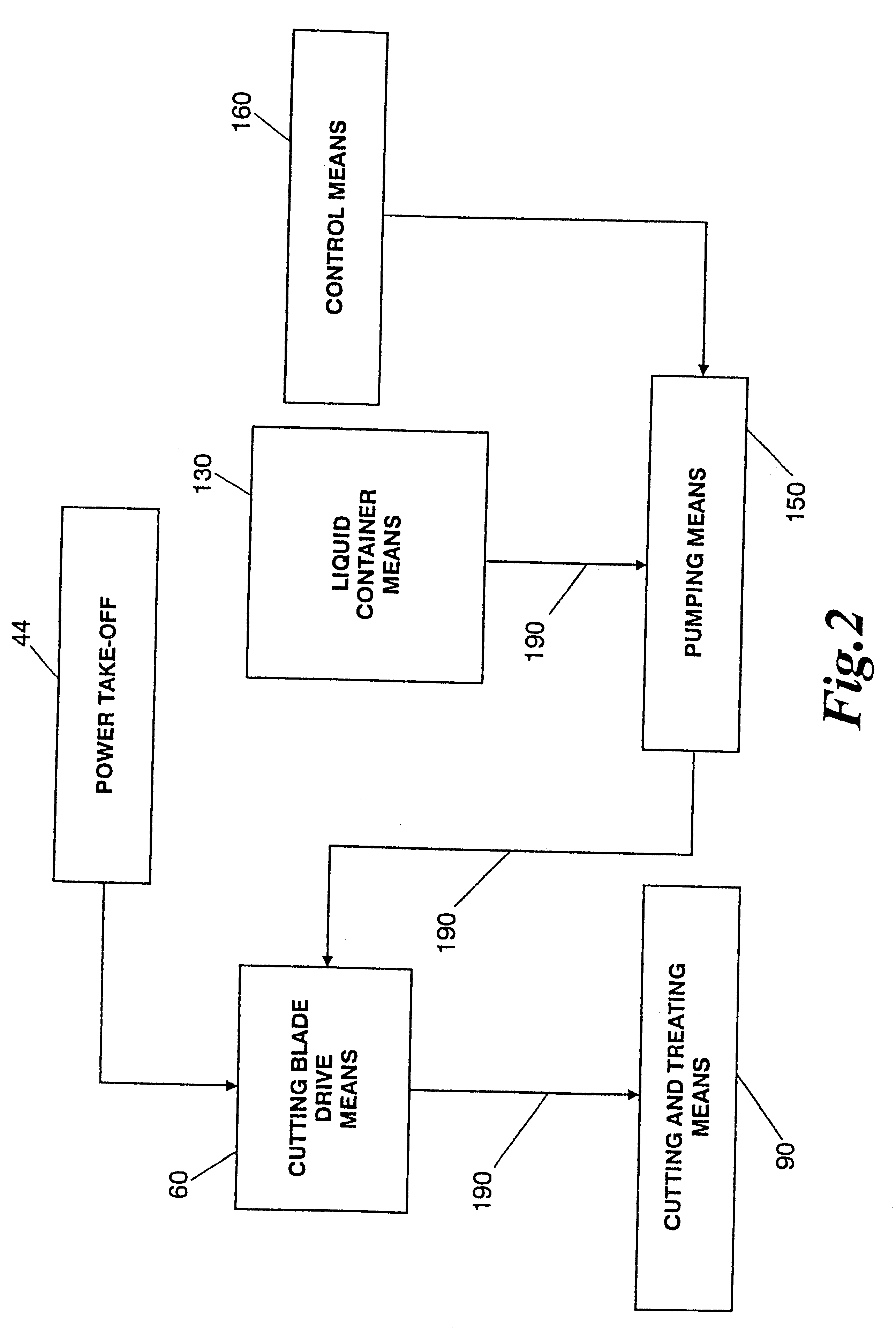Method for cutting and treating vegetation
a technology for cutting and treating vegetation, applied in the direction of digger harvesters, agriculture tools and machines, agriculture, etc., can solve the problems of inability to cut vegetation and treat cut vegetation in a non-horizontal orientation, tube breakage or kink, subject to puncture or torn away, etc., to achieve the effect of not spoiling or losing potency
- Summary
- Abstract
- Description
- Claims
- Application Information
AI Technical Summary
Benefits of technology
Problems solved by technology
Method used
Image
Examples
Embodiment Construction
Referring to the accompanying drawings in which preferred embodiments of the invention are shown, FIGS. 1a and 1b illustrate apparatus, indicated generally at 40, for cutting vegetation and simultaneously treating the remaining stems of the cut vegetation with a treatment fluid. The treatment fluid may be any treatment fluid which is applied to vegetation such as a growth regulator, herbicide, pesticide, fungicide, fertilizer or biological agent, depending on the desired result. Preferably, the treatment fluid is water-born. However, the treatment fluid may be born by any substance which combines with the treatment fluid to produce a non-viscous, flowable fluid. The apparatus 40 delivers the treatment fluid to the underside of the cutting blade so that a stream of treatment fluid is continuously available to the remaining stems of the cut vegetation at the time that the vegetation is cut. It has been discovered that a physical phenomenon occurs at the time that vegetation is cut. Fl...
PUM
 Login to View More
Login to View More Abstract
Description
Claims
Application Information
 Login to View More
Login to View More - R&D
- Intellectual Property
- Life Sciences
- Materials
- Tech Scout
- Unparalleled Data Quality
- Higher Quality Content
- 60% Fewer Hallucinations
Browse by: Latest US Patents, China's latest patents, Technical Efficacy Thesaurus, Application Domain, Technology Topic, Popular Technical Reports.
© 2025 PatSnap. All rights reserved.Legal|Privacy policy|Modern Slavery Act Transparency Statement|Sitemap|About US| Contact US: help@patsnap.com



